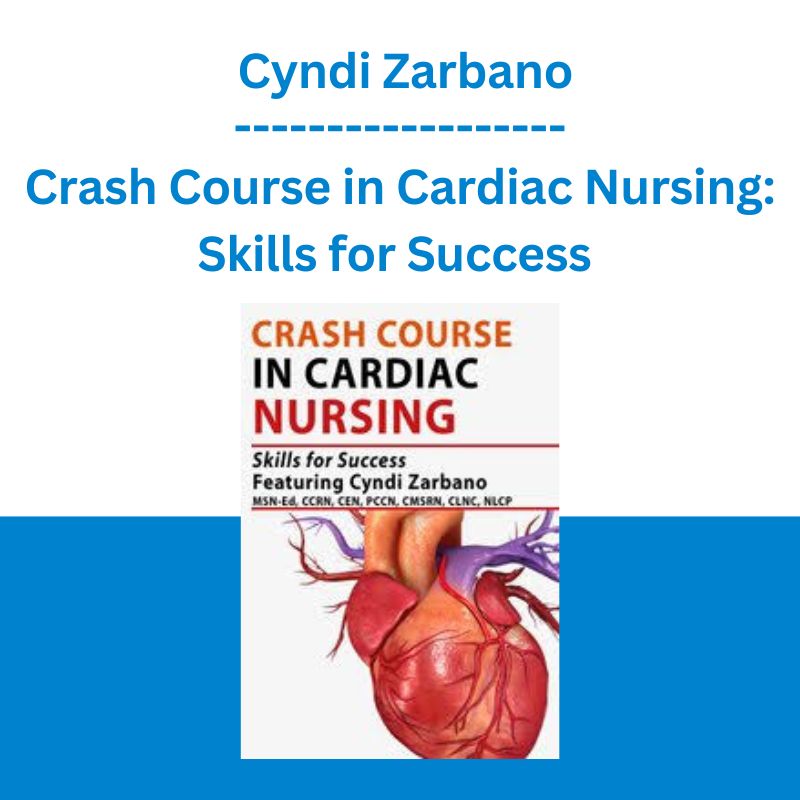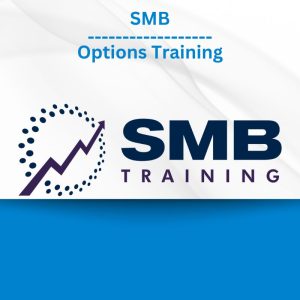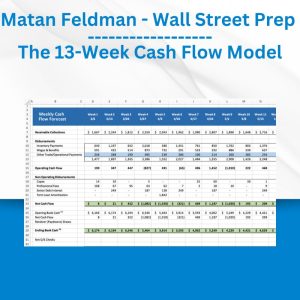*** Proof of Product ***

Exploring the Essential Features of “Crash Course in Cardiac Nursing: Skills for Success – Cyndi Zarbano”
Description
- Take the Fear & Intimidation out of Cardiac Assessment
- Master EKG Interpretation
- Sharpen Your Crisis Management Skills
- The Cardiovascular Drug Cabinet: The Latest Updates & Recommendations
- Management Strategies for Life-Threatening Cardiac Conditions
- Practical Tips & Tools to Use the Very Next Day!
You MUST be able to identify cardiac issues in their early stages and respond appropriately to avoid life-threatening complications. Even many seasoned nurses remain confused by the complexity of the cardiac system and feel insecure in their assessment and analysis of rhythms and EKGs. Attend this comprehensive program and gain the skills and knowledge you need to manage any situation. Cardiac expert, Cyndi Zarbano, breaks down the most complex cardiac disorders and will provide you with practical tools and tips that are guaranteed to increase your confidence when caring for this challenging population. Your patients depend on you; don’t miss this opportunity to become a CARDIAC EXPERT!
- Imagine the Confidence you will have in your knowledge and ability to quickly assess complex cardiac patients.
- Imagine the Respect you’ll gain from your colleagues and patients when you respond rapidly and effectively in crisis situations.
- Imagine the Satisfaction you will feel knowing that your advanced skills saved the life of your patient.
Speaker
Cyndi Zarbano, MSN-Ed, CCRN, CMSRN, LNC, has been a nurse for nearly 30 years specializing in intensive care. She earned her legal nurse consultant training through the Vickie Milazzo Institute in 2008 and has worked on nearly 250 cases for various boards of nursing. She has worked with attorneys on pre-corrective action and with nurses to meet consultation requirements to fulfill corrective action guidelines.
Additionally, Cyndi has worked as a legal nurse consultant responsible to analyze medical records, determine merit, assist with client interviews, attend medical appointments, locate testing experts, complete chronologies, review billing for accuracy, provide deposition/jury question development, and assist in court strategy development. Cyndi is a renowned national seminar speaker having spoken for numerous companies since 2008, including her own, Clinical Review Consultants. She works for Mayo Clinic in Minnesota continuing her passion for bedside nursing in critical care.
Speaker Disclosures:
Financial: Cynthia Zarbano is the owner of Clinical Review Consultants and has an employment relationship with Mayo Mankato. She receives a speaking honorarium and recording royalties from PESI, Inc. She has no relevant financial relationships with ineligible organizations.
Non-financial: Cynthia Zarbano has no relevant non-financial relationships.
Outline
DAY 1
Cardiovascular Assessment: Critical Clues You Should NEVER Miss
- Impending Doom: Recognizing the Red Flags
- Neck Vein Evaluation
- What Does the Blood Pressure Really Mean?
- Don’t Miss a Beat Interpreting Heart Sounds
- Significant Murmurs
- Rapid Stabilizing Interventions
Life-Threatening EKG Changes: Clues From the 12-Lead
- Location, Location, Location! Anatomy of the 12-Lead
- 3 Rules of Recognition
- Cardiac Axis: Meaning & Assessment
- Recognition of RBBB & LBBB
- STEM I & NSTEM I – What’s the Difference
Fast & Slow Dysrhythmias
- Choosing Your Monitor Leads Wisely
- Identifying AV Passive & Active Tachycardias
- Aberrant Pathways
- Atrial Fibrillation with WPW
- AV Node Re-entry Rhythms
- Mono and Polymorphic V-Tach
- Heart Blocks
- Critical Nursing Actions
Cardiovascular Drug Cabinet from A to Z
- The Latest Updates & Recommendations
- Medications that Impact Cardiac Output
- Vasoactive Medications
- Medications that Impact Clotting
- Treating Hyperlipidemia
- Management Strategies for Hypertension
- Nursing Implications for Administration
- Polypharmacy
- Precautions with the Elderly Patient
DAY 2
Acute Coronary Syndrome: Diagnosis & Management Guidelines
- STEM I vs. NSTEM I Treatment Strategies
- Critical Cardiac Labs
- EKG Interpretation: Identifying the Differences
- Urgent vs. Emergent Interventions
- Managing Complications
The Failing Heart: Acute Management Priorities
- Systolic vs. Diastolic Heart Failure
- Classification Systems
- Acute Medication Protocols
- Nursing Considerations With:
- Biventricular Pacing
- Implantable Cardioverter Defibrillators
- Intra-Aortic Balloon Pump
Cardiac Emergencies: Risk, Recognition, & Response
- Bedside Assessment Clues
- Key Interventions for:
- Pulmonary Embolus
- Myocardial Rupture/Tamponade
- Tension Pneumothorax
- Aortic Dissection
- Critical Thinking Checkpoints
Emergency Interventions for Atrial Fibrillation
- Critical Decision-Making: The Decompensating Patient
- Pharmacological Management Strategies to:
- Control Rate
- Control Rhythm
- Prevent Stroke
- Current Treatment Recommendations:
- Cardioversion
- Ablation
- Surgical Intervention
- Key Nursing Assessments & Interventions
Objectives
DAY 1
- Employ proper technique for measuring jugular vein distention (JVD).
- Contrast systolic and diastolic murmurs by where they fall in the S1/S2 cardiac cycle.
- List 3 benefits of beta blockers in a patient with coronary artery disease.
- Identify benefits for patients using blood thinners in atrial fibrillation that is not related to valve dysfunction.
- Differentiate findings on the 12-lead EKG to determine if a patient has axis deviation and what health care issues that may identify.
- Explain a simple monitoring technique to help differentiate if the patient is having an atrial dysrhythmia or not.
- Identify EKG clues to patients having aberrant pathways.
DAY 2
- Explain the difference between systolic and diastolic heart failure using a simple hand gesture to recognize ventricular dysfunction for each.
- Stage heart failure using the American Heart Association/American College of Cardiology tool and identify intervention goals for each stage.
- Compare the use of the Impella device and intra-aortic balloon pumps in severe cardiac impairment.
- Evaluate findings in common cardiac labs, such as CKMB, Troponin, BNP/ Pro-BNP levels.
- Recognize 2 tools of recognition and 4 rapid interventions for patients experiencing Acute Coronary Syndrome (ACS).
- Describe the decision-making process for stroke prevention in the patient with atrial fibrillation.
Target Audience
Cardiovascular Technology Professionals, Nurses, and other Healthcare Professionals
Please see the full list of alternative group-buy courses available here: https://lunacourse.com/shop/









